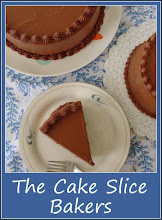With Easter just around the corner this usually results in a flurry of sweet chocolate based baking. This year, along with the usual sweet treats I decided to make an eggception and eggspand into the savoury section and bake an eggcellent pizza too – and it’s egg shaped – how eggciting! *after receiving many rolling of eyes* Ok, enough of the egg related puns!
When people mention Easter and food I’m sure most of us instantly think of chocolate eggs and other sweet goodies, but I don’t see why the Easter egg theme can’t be applied to savoury foods too – afterall traditionally chocolate has nothing to do with Easter. I have been planning on making pizza for a while now and today finally got around to organising myself to make it. While shaping the base I decided to have a bit of fun and make it egg shaped and then to decorate the top in a design. It sort of worked, just squint a bit…see the olives are gems and the pepper strips and the zig-zag design. I may not be the best looking egg inspired pizza, but I had fun being creative and it tasted yummy and that’s what matters.
My pizza took a Greek route as I had some olives and feta to use up in the fridge but obviously you can add whatever takes your fancy. You can make bespoke individual egg shaped pizzas to suit your friends and families topping preferences or if they are not fussy then just bake a giant one and divide it up.
I used my favourite pizza dough recipe for the base, it’s a no knead dough that simply needs mixing together the night before and then leaving in the fridge overnight to slowly bubble and develop into a lovely silky soft and stretchy dough. It couldn’t be easier and means you can be eating pizza within 20 minutes of walking in the door the following day, much quicker than a takeaway or even a shop bought pizza.
I hope everyone has an eggcellent Easter!
Easter Pizza
For the pizza dough
320g strong plain white flour
¾ tsp salt
15g fresh yeast (or 7g dried)
30ml olive oil
210ml warm water
1 tsp caster sugar
Tomato topping
1 onion
1 large can of chopped tomatoes
1 tbsp olive oil
2 tsp dried oregano
1 tbsp sundried tomato paste
1 clove garlic
Salt and pepper to taste
Toppings of your choice
Feta cheese
Olives
Orange pepper
Mushrooms
Fresh basil
Sun dried tomatoes
Method – for the pizza dough
Heat the water until it is just warm to the touch but not hot. Add the olive oil and crumble in the fresh yeast and sugar. Stir until dissolved.
Place the flour and salt into a large bowl and pour over the yeast mixture. Mix together using the tips of your fingers until a sticky dough is formed.
Turn out onto a lightly floured surface and kneed until smooth, around 3 minutes. The dough should become less sticky although still tacky to the touch.
Place the dough in a lightly greased bowl and cover with clingfilm. Place in the fridge overnight or for up to 5 days.
Tear off chunks of dough when required.
Makes enough dough for 3 x 9inch pizzas.
For the tomato topping
Peel and finely dice the onion. Heat the oil in a pan and add the onion and oregano. Cook until soft, then finely crush the garlic and add to the pan. Cook for a further 2 minutes.
Add the chopped tomatoes, sundried tomato paste and a pinch of salt and pepper.
Allow to simmer for 15 minutes until the mixture has reduced and thickened.
Allow to cool in the pan, then transfer to a bowl, cover with cling film and keep in the fridge until required.
Makes enough sauce to cover 3 pizza bases.
To assemble
When ready to eat the pizza, preheat the oven to its hottest setting, usually around 250-275C. Place a pizza stone or baking tray into the oven to heat up.
Have a sheet of baking parchment or a silicone mat ready and dust the top with flour or fine cornmeal.
Lightly dust your hands with flour and tear off a third of the pizza dough. Gently stretch it, pulling from the middle outwards, to your desired thickness.
When the dough is quite thin, lay it onto a sheet of baking parchment or a silicone mat and pull into shape.
Spread a third of the tomato sauce over the top, leaving a small rim around the edge.
Add the toppings - assorted vegetables or meats of your choosing and a few torn basil leaves.
Grate or crumble the cheese of your choice over the top.
Remove the hot baking tray from the oven and quickly slide the sheet of baking parchment with your pizza on it, onto the baking tray and return to the oven. (This ensures the base is cooked and crisp at the same time as the top).
Bake for 8-10 minutes until the crisp, golden brown and bubbling.
Eat and enjoy.
If you are still craving something sweet then here is a list of my previous Easter themed sweet treats.
Simnel Cake – traditionally for Mothers Day but now often associated with Easter.
Chocolate Rice Krispie Mini Egg Nests
Apple & Cinnamon Hot Cross Buns
Spiced Chocolate Cupcakes topped with Mini Chocolate Rice Krispie Mini Mini Egg Nests
Just Opened: Bazaar & Bar, Brookvale
4 hours ago

































 Vanilla Rice Pudding
Vanilla Rice Pudding






 Ingredients
Ingredients





 Spiced Carrot Dough
Spiced Carrot Dough Place the butter in a small bowl and heat in the microwave until melted. Pour over the milk and heat again for 30 seconds until the milk is warm to the touch but not hot. Stir in a tablespoon of the sugar and crumble in the fresh yeast. Stir to combine and leave to stand for 10 minutes.
Place the butter in a small bowl and heat in the microwave until melted. Pour over the milk and heat again for 30 seconds until the milk is warm to the touch but not hot. Stir in a tablespoon of the sugar and crumble in the fresh yeast. Stir to combine and leave to stand for 10 minutes. Once the dough has doubled in size, turn it out onto a lightly floured work surface and roll into a long rectangle, about 15x20 inches.
Once the dough has doubled in size, turn it out onto a lightly floured work surface and roll into a long rectangle, about 15x20 inches.



